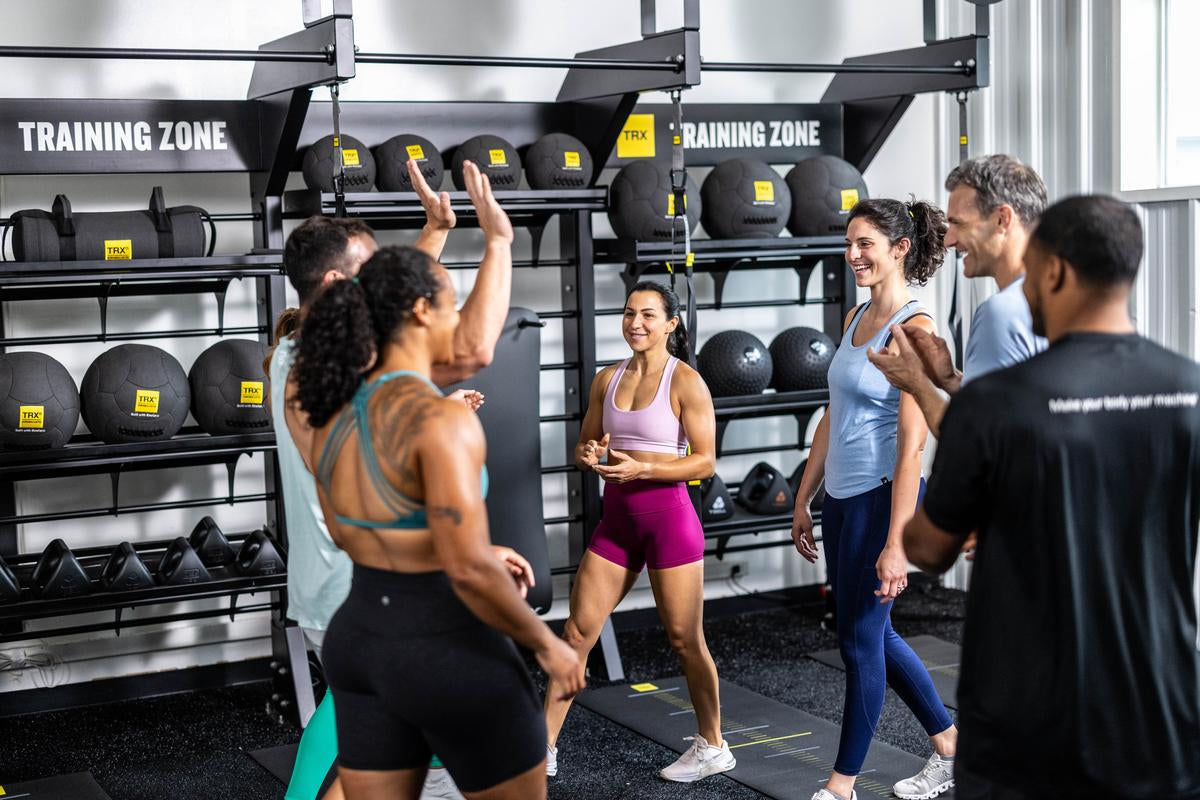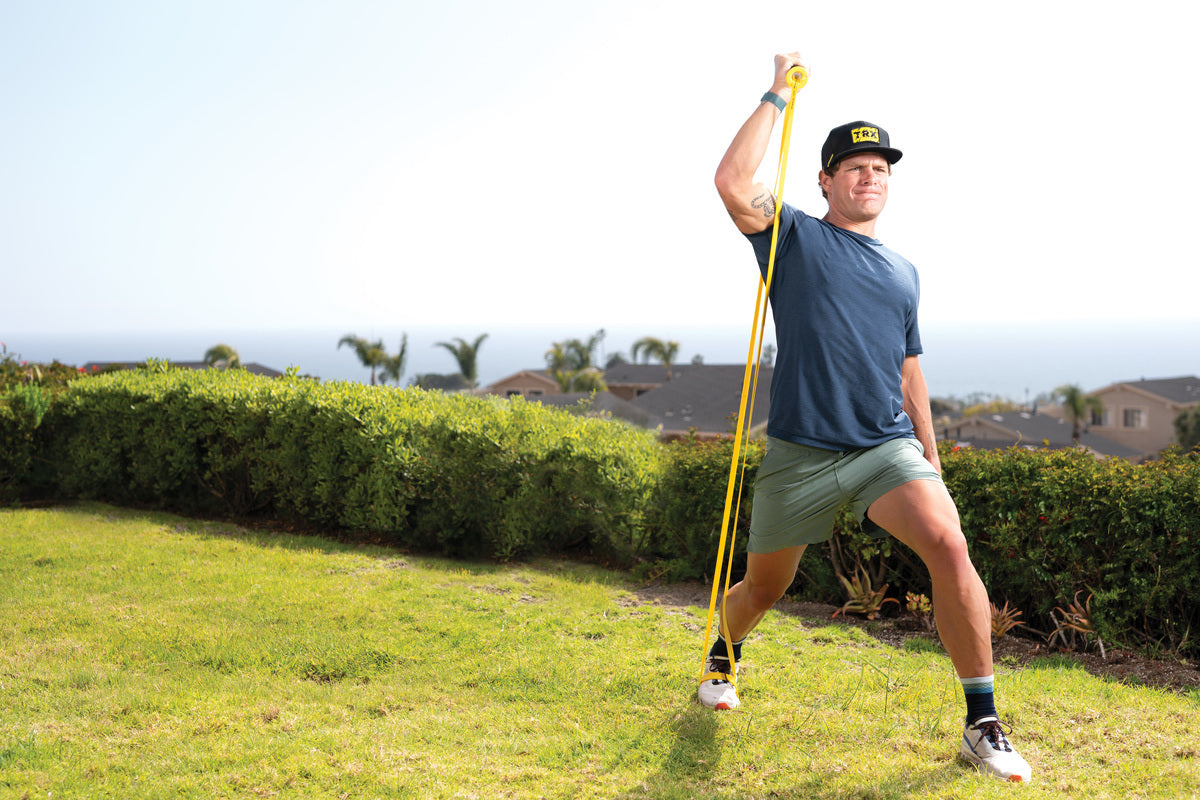Dealing with a runner's knee can be a frustrating experience, especially for those who enjoy running or other leg-intensive activities. The good news is that with the right exercises, you can strengthen the muscles around your knee, improve mobility, and reduce pain. In this article, we’ll explore some of the best runner's knee exercises that can help alleviate discomfort and prevent further injury. These exercises are designed to target the muscles in your legs, hips, and core, offering effective relief. Ready to start your journey to recovery? Let’s dive in!
What is Runner’s Knee?
Runner's knee, or patellofemoral pain syndrome, is a common condition that causes pain around the kneecap. It often happens due to overuse, poor alignment, or muscle imbalances. Activities like running, squatting, or climbing stairs can make the pain worse. Rest, proper stretching, strengthening exercises, and wearing supportive footwear usually help relieve symptoms. Incorporating Gym Moves on a TRX Suspension Trainer into your routine can also be a great way to target the muscles around the knee. TRX exercises help build strength, improve stability, and correct imbalances, all of which are important for managing and preventing a runner's knee.
The Best Runner's Knee Exercises
1. Straight Leg Lift
A straight leg lift strengthens your thighs, hips, and core while supporting your knees and lower back. It’s ideal for recovering from knee injuries or joint pain, and improving stability, endurance, mobility, posture, and balance.
Here’s how to do the Straight Leg Lift:
-
Start by lying flat on your back on a comfortable surface, such as a mat or carpet. Keep your legs straight and your arms relaxed at your sides.
-
Bend one leg so your foot is flat on the ground. This provides support for your lower back. Keep the other leg extended and straight.
-
Tighten your abdominal muscles to stabilize your body and protect your lower back.
-
Slowly raise the straight leg to about the height of your bent knee, keeping it as straight as possible.
-
Pause for a moment at the top, ensuring your movements are controlled.
-
Lower the leg back down to the starting position without letting it drop too quickly.
-
Perform the desired number of repetitions, then switch to the other leg if needed.
2. Standing Hip Flexor Stretch
The standing hip flexor stretch helps loosen tight hip muscles, improve flexibility, and relieve lower back tension. It’s great for enhancing posture, and mobility, and reducing stiffness caused by prolonged sitting or overuse.
Here’s how to do the Standing Hip Flexor Stretch:
-
Lie flat on your back with one leg straight and the other bent.
-
Tighten your core muscles to stabilize your body.
-
Slowly lift the straight leg to the height of the bent knee.
-
Hold briefly at the top, keeping the leg straight.
-
Lower the leg slowly back down.
-
Repeat for the desired number of reps, then switch legs if needed.
3. Standing Quad Stretch
The standing quad stretch targets the muscles at the front of your thighs, helping to improve flexibility and reduce tightness. This stretch is especially helpful for relieving tension after activities like running or cycling, which engage the quads. It can enhance mobility, prevent muscle imbalances, and reduce the risk of injury. It also aids in maintaining proper posture, supporting knee health, and promoting proper breathing during the stretch to enhance relaxation and effectiveness.
Here’s how to do the Standing Quad Stretch:
-
Start by standing tall and holding onto a wall or chair for balance if needed.
-
Bend one knee and bring your heel toward your glutes.
-
Grab your ankle with your hand and gently pull it closer.
-
Keep your knees together and your torso upright to avoid leaning forward.
-
Hold the stretch for 20–30 seconds, then slowly release and switch to the other leg.
4. Hamstring Stretch
The hamstring stretch is one of the best hamstring exercises you can do from your home. improves flexibility, reduces tightness, and helps relieve discomfort from activities like running or sitting. It enhances range of motion, posture, and mobility while reducing the risk of injury.
Here’s how to do the Hamstring Stretch:
-
Start by standing tall with your feet hip-width apart.
-
Take a step forward with one leg, keeping it straight while the other leg remains slightly bent.
-
Hinge at your hips, reaching towards the toes of the extended leg.
-
Keep your back flat and avoid rounding your spine.
-
Feel the stretch in the back of your thigh, then hold for 20–30 seconds.
-
Return to the starting position and switch legs.
5. Donkey Kick
The donkey kick is an exercise that primarily targets the glutes and helps strengthen and tone the buttocks. It also engages the core and lower back, promoting stability and balance. This move is great for improving hip mobility and posture and enhancing the strength and shape of your glutes while also improving overall lower body strength.
Here’s how to do the Donkey Kick:
-
Start on your hands and knees, with your hands directly under your shoulders and knees under your hips.
-
Keep your back flat and your core engaged.
-
Lift one leg towards the ceiling, bending your knee at a 90-degree angle.
-
Focus on squeezing your glutes as you raise your leg, ensuring your foot stays flexed.
-
Pause at the top, then slowly lower your leg back to the starting position.
-
Repeat for the desired number of reps, then switch legs.
6. Wall Side
The wallside exercise is a simple yet effective movement that targets the lower body, especially the glutes, thighs, and hips. It also engages your core to maintain balance and stability throughout the movement. It can improve leg strength and toning the muscles in the lower body. It’s easy to perform and can be done anywhere with access to a wall, making it ideal for home workouts.
Here’s how to do the Wall Side:
-
Stand with your back against a wall and your feet about shoulder-width apart.
-
Slowly slide your back down the wall as you bend your knees, lowering your body into a squat position.
-
Ensure your knees are aligned with your toes and your thighs are parallel to the ground.
-
Hold the position for a few seconds, then slowly rise back to standing.
-
Repeat for the desired number of reps.
7. Step Up
The Step-Up exercise is a great movement to do at the gym and at home. It targets the quadriceps, hamstrings, and glutes by mimicking stair climbing. It improves lower-body strength, stability, and coordination, benefiting activities like walking, running, and sports while enhancing balance and supporting rehabilitation.
The Step-Up targets the quadriceps, hamstrings, and glutes, improving strength, stability, and balance. It’s beneficial for walking, running, and sports while supporting rehabilitation. Bodyweight Exercises to Get a Full Body Workout at Home can complement this by strengthening multiple muscle groups, enhancing overall fitness without equipment.
Here’s how to do the Step Up:
-
Stand in front of a bench or elevated surface.
-
Step up with one foot, pressing through your heel to lift your body.
-
Bring your other foot up to join the first foot on the elevated surface.
-
Step down with the same foot, followed by the other foot.
-
Repeat the movement for 10–15 reps, then switch legs.
8. Standing Calf Stretch
The standing calf stretch targets the muscles at the back of your lower legs, helping to improve flexibility and relieve tightness. It’s especially helpful after activities like running, walking, or standing for long periods. Regularly stretching the calves can reduce the risk of muscle strain, improve overall lower body mobility, and enhance posture.
Here’s how to do the Standing Calf Stretch:
-
Stand tall with your feet hip-width apart.
-
Step one foot back, keeping both feet flat on the ground and your back leg straight.
-
Bend your front knee slightly and press your hips forward to feel a stretch in the back of your calf.
-
Hold the stretch for 20–30 seconds, then switch legs.
9. IT Band Stretch
The Clam Exercise strengthens the gluteus medius, improving hip stability and mobility. It helps prevent hip pain, and knee instability, and supports lower-body injury rehabilitation, making it ideal for enhancing posture and movement.
Here’s how to do the IT Band Stretch:
-
Stand with your feet hip-width apart.
-
Cross your right leg over your left, keeping both legs straight.
-
Shift your hips toward the left while reaching your right arm overhead and toward the left.
-
Hold the stretch for 20–30 seconds, feeling the stretch along the outer part of your hip and thigh.
-
Repeat on the opposite side.
10. Clam Exercise
The Clam Exercise strengthens the gluteus medius, improving hip stability, posture, and mobility. It targets the outer hip and thigh muscles, helping to prevent hip pain, knee instability, and lower-body injuries, making it ideal for strengthening the hips and enhancing overall movement.
Here’s how to do the Clam Exercise:
- Lie on your side with your legs stacked and knees bent at a 45-degree angle.
- Rest your head on your lower arm and place your top hand on your hip.
- Keeping your feet together, lift your top knee as high as you can without moving your pelvis.
- Slowly lower your knee back to the starting position.
- Repeat the movement for 10–15 reps, then switch sides.
Is Exercise a Good Way to Treat Runner's Knee?
Exercise can effectively treat a runner's knee by strengthening the muscles around the knee, improving stability, and reducing strain. Stretching enhances flexibility, while low-impact exercises like cycling or swimming prevent added stress. It's important to start with gentle movements, avoid high-impact activities, and gradually increase intensity. Consulting a healthcare professional can provide a tailored recovery plan.
What is the Duration of the Recovery Process?
The recovery duration for a runner's knee depends on the severity of the condition. Mild cases can improve within a few weeks with rest and exercise, while more severe cases may take several months. Consistent treatment, including stretching and strengthening, is essential for a quicker recovery. Full recovery often takes 4-6 weeks, but it can vary based on individual factors like fitness level and adherence to a treatment plan.
Conclusion
With the right exercises and proper care, a runner’s knee can be effectively managed and treated. Strengthening the muscles around the knee, improving flexibility, and avoiding activities that exacerbate the condition can help speed up recovery and prevent future injuries. Remember to listen to your body, progress at a safe pace, and consult a professional for personalized guidance. With patience and consistency, you can get back to your favorite activities pain-free.



